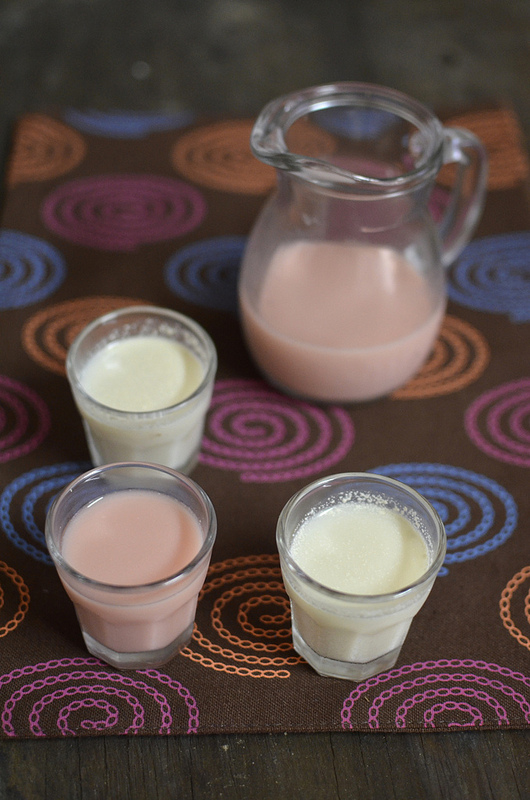
Growing up in Nigeria, Tiger nuts were one of the things I saved my holiday money for. I enjoyed both fresh and dried tiger nuts. We waited anxiously all holiday for the mallams to bring their wheel barrow around.
The nostalgic feeling returned on my most recent trip to Nigeria, I purchased ₦200 worth of Tiger nut and finished it in two days. For those who are not familiar with the stuff, it’s locally referred to as imumu or ofio . Contrary to popular perception, the nuts are more of a tuber than they are nuts.
Health Benefits of Tiger nuts:
- Rich in energy (starch, fat, sugar, and protein), minerals (mainly phosphorus and potassium)
- They are rich in vitamins E and C
- Tigernut tubers contain almost twice the quantity of starch as potatoes
- The oil of the tuber contain 18% saturated and 82% unsaturated fatty acids making it extremely healthy
- The skin of the Tiger nut (which isn’t often consumed) contains most of the fiber content. (59.71 g/100 g), composed mainly of insoluble dietary fiber (99.8%)
The most popular bi-product of Tiger nut in Kunuun aya, a popular drink mostly consumed among the Hausa people . I decided not to recreate the recipe since the very lovely Kitchen butterfly already did . FInd the detailed recipe for Tiger Nut milk on her website through the link below:
Note: to get the complete benefit of this nut, dry out the chaff and mill it into flour. Use the flour in your favorite baking recipes or to pump up the fiber content of garri and pounded yam.
Read more on Tiger Nuts from Our friends at Natural Nigerian and the Lovely Kitchen Butterfly
Did you grow up eating tiger nuts?






On a friends advice, my breakfast consists of handful of succulent tiger nuts (offio) and a big cup of pure cocoa drink. It has improved my health greatly. I’m over 74 years old! The cocoa drink is without sugar or milk please.
“to get the complete benefit of this nut, dry out the shaft from kunun production and mill it into flour” How do I dry it out?
you can spread the shaft out on some parchment or aluminum foil to open air dry, or you can dry it in the oven.
Aya! :)
I am interested to buy Ofio. Give me a wholesale price.
That looks heavenly!!! How i miss aya sometimes
i really love dis more, now that i know the health benefits of Ofio, i will always have it in my hand bag as in my primary school days. Love to go back, way back with garri, just chew it like dat and you will forget to buy any regular food. Lolzzz, its fun sha.
Lovelyn ogechi
If you need to import Tiger Nuts, we can supply the said from Benin Republic and Nigeria at very competitive rate…. Mhcigroup (at) gmail dot com is the email to send your enquiries.
If you really need Tiger Nuts (Caufa) , please contact me on my e-mail. I am in Toronto Canada.
Growing up I loved ofio, thankful I am still in Nigeria and get to buy it easily till now. Although I recently started making it into drink. I would also try to dry the chaff and use as flour.
Comment…wow, just prepared some now with . Mixed the powder and coconut and blend it together. Tastes great!
Hi everyone, we are so pleased that you are nuts about Tiger Nuts too!
If you would like to get some Tiger Nuts right here in the USA, please visit our web site www. tigernutsusa .com and you will see that we have the traditional Premium Organic Tiger Nuts, but also we have a patented process that enables us to take off the outside and we call these out Supreme Peeled variety.
I am currently working on tigernut on my Msc project thesis
Great! I would love to read the summary report.
Oh wow!! I haven’t seen these in forever!! I want.
So glad to see you’re still going strong :D
Adiya
Ah so that’s the name? Remember going for classes with a waist band full of it,even planted some in our back yard!
I want to know more about tiger nut health benefit, kindly reach me through my mail.
please email [email protected]
Aki Hausa right? I always ate only small quantities because it wasn’t my favourite thing. But seems like I’ll step it up a bit now that I know the nutritional benefits. Maybe I’ll mill the one I have now getting dry and use it in flour mix … will let you know how that turns out.
I first read about them in Kitchen Butterfly as you mentioned. Great to see how they are used!
I love Ofio!!!!!! i would always chew it till the whole juice has been extracted before discarding the chaff. Soooo tasty.
Comment…interesting! I jst eat it,neva tot of it health benefit.
I did grow up eat these. They have a very interesting texture. Are you supposed to swallow or discard the “leftover”?
Tiger nuts have been cultivated for two main reasons, as a livestock food (the grass) and for human consumption of the tubers. Tiger nuts were widely grown in Florida in the 1940’s. These nuts were widely available in Britain in the 1960’s (Apparently they gained popularity in the post-war years when sugar was in short supply). In the 1980s, they were still grown for livestock feed on a few farms in Florida. In Spain, Ofio is planted outdoors from late spring or from April through to September, dried during September and October until they are finally harvested in November/December. Like rice they need irrigation on a weekly basis, and seem to be particularly well adapted to the climate around the Spanish Mediterranean coast. They are also grown in Egypt where they are used in perfumes, food, medicine and ice cream flavoured with them or biscuits. Tiger nuts are widely cultivated in and exported from China, Mali and the Ivory Coast. Seldom grown as a food item in home gardens anymore, tiger nuts are now only available in health food shops or as fishing bait.
Imumu! #sigh. I haven’t had these in a while